Gross Motor Development
1/42
There's no tags or description
Looks like no tags are added yet.
Name | Mastery | Learn | Test | Matching | Spaced |
|---|
No study sessions yet.
43 Terms
Neonate: Prone
* Head elevates to clear face and reposition it
* Physiological Flexion- Flexor bias of trunk and extremities (they were in the womb like this)

Neonate Supine
* Head rotates fully in either direction but can come to midline with arousal
* if the babies do come to midline, they can't maintain posture for long
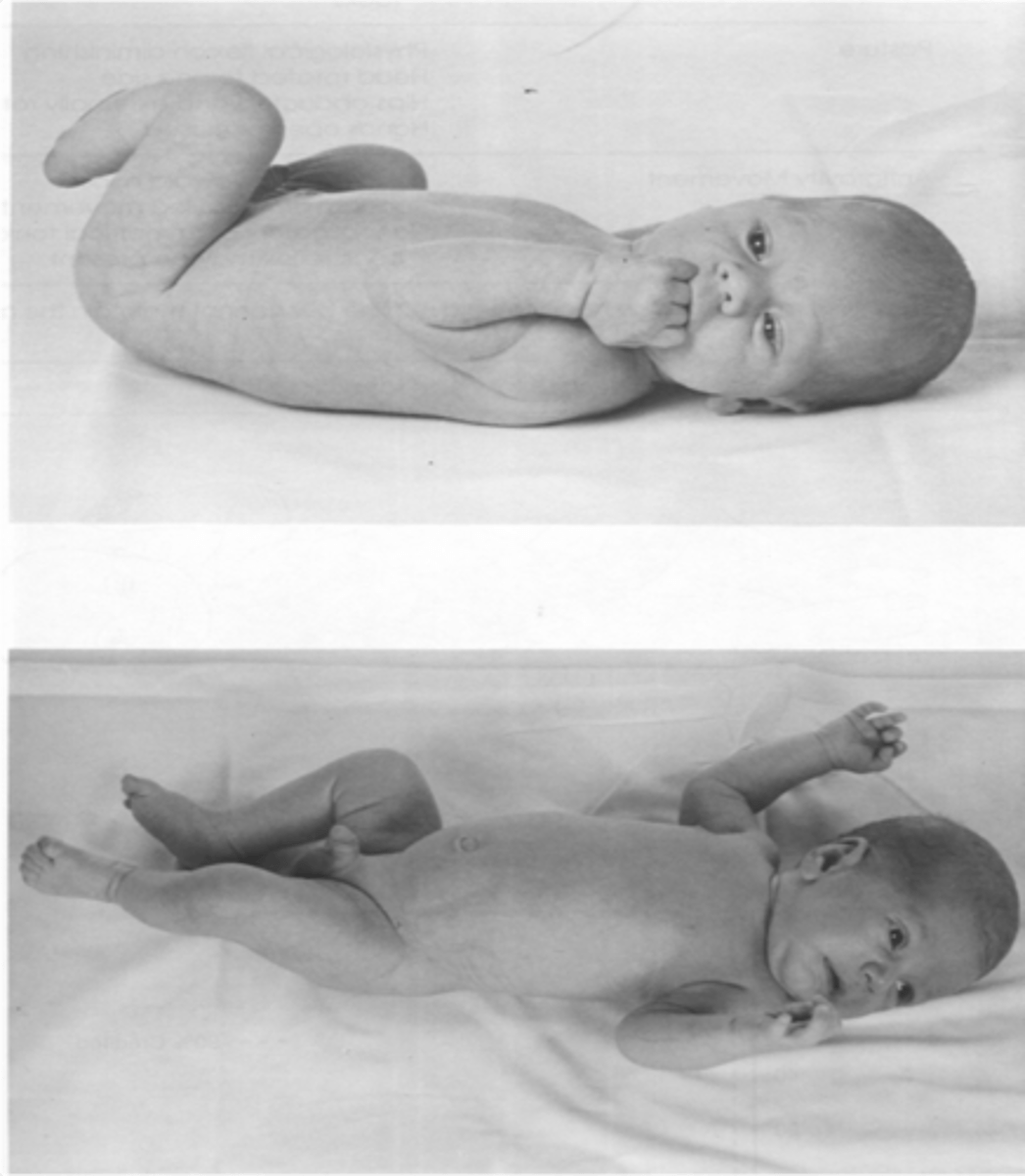
Neonate Sitting
Head may bob while in kyphotic, supported sitting position
Head position is typically flexed forward
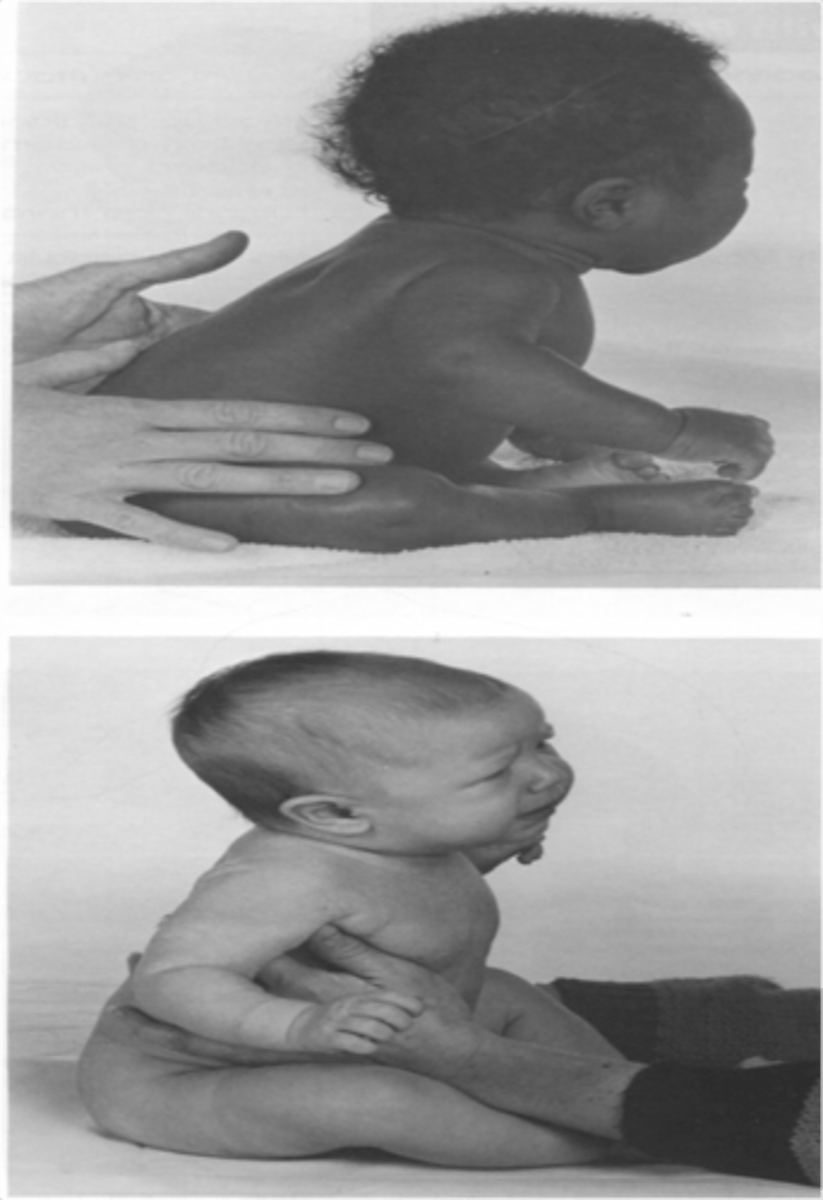
Neonate Standing
Reflex standing and stepping (primary standing)
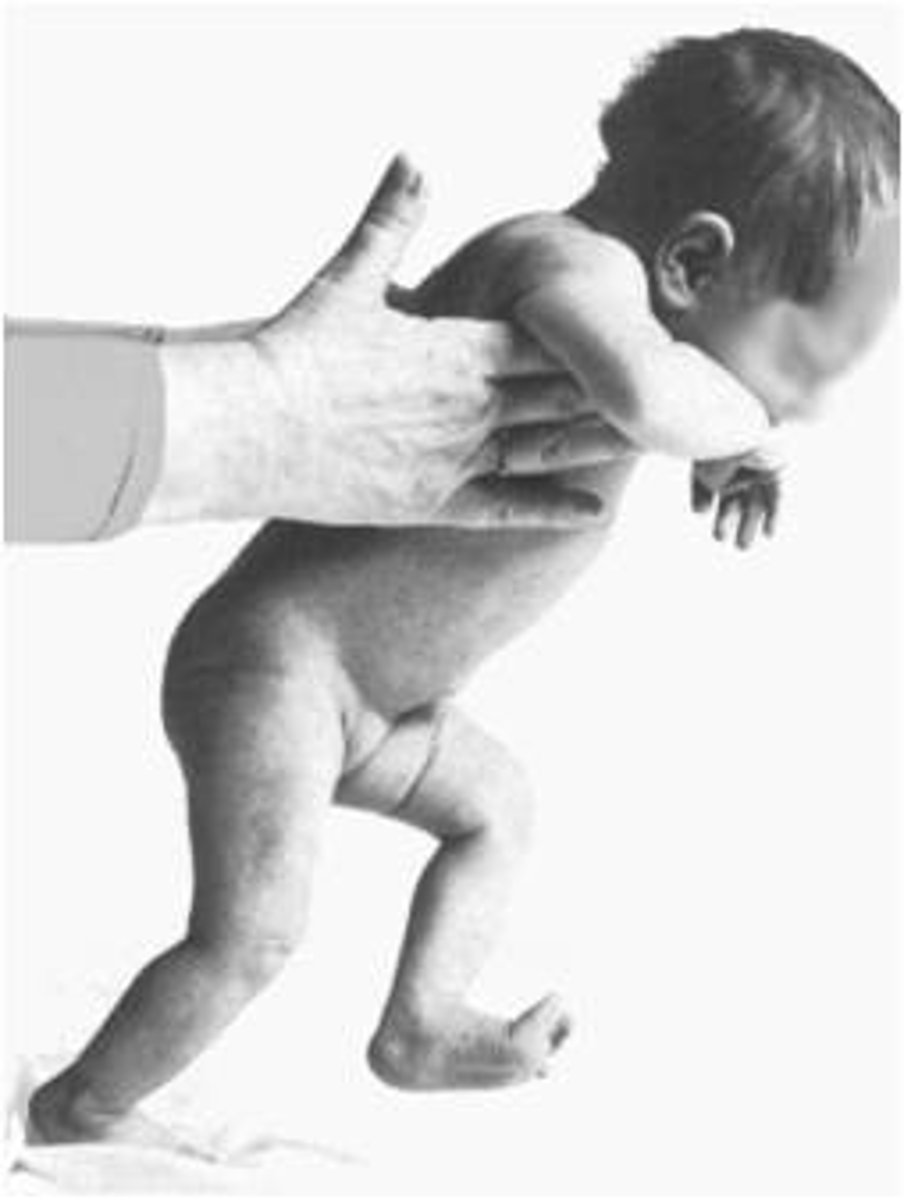
infancy (1-3 months)
-adapting to extero-uterine environment
-working on attainment of physiological by regulating respiration, temp, sucking/swallowing, sleep/wake cycle
-most time is spent sleeping and feeding
1 month milestones
prone: head rotates when placed face down on surface, momentarily lifts head off surface, physiological flexion persists but decreases, head droops in ventral suspension;momentarily lifts to plane of body
supine: asymmetrical postures predominant with all limbs flexed, more random movements (extension) of limbs, hands fisted, reciprocal kicking alternates with symmetric kicking
sitting: forward flexion of trunk (with adult support), head in line with trunk for short intervals
standing: reflex standing and walking
2-3 month milestones
prone: Elbow in line with shoulders for forearm support; lift head to 45 degrees, sustained to 90 degrees momentarily; posture with pelvis flat on surface
supine:Symmetrical posture with mid-position of head, but may still prefer head to side; legs kick reciprocally
sitting:head upright but still bobbing in supported sitting; needs full support to sit; variable head lag in pull to sitting position
standing: Supported standing with poor weight bearing hips in flexion, behind shoulders
symmetrical posture
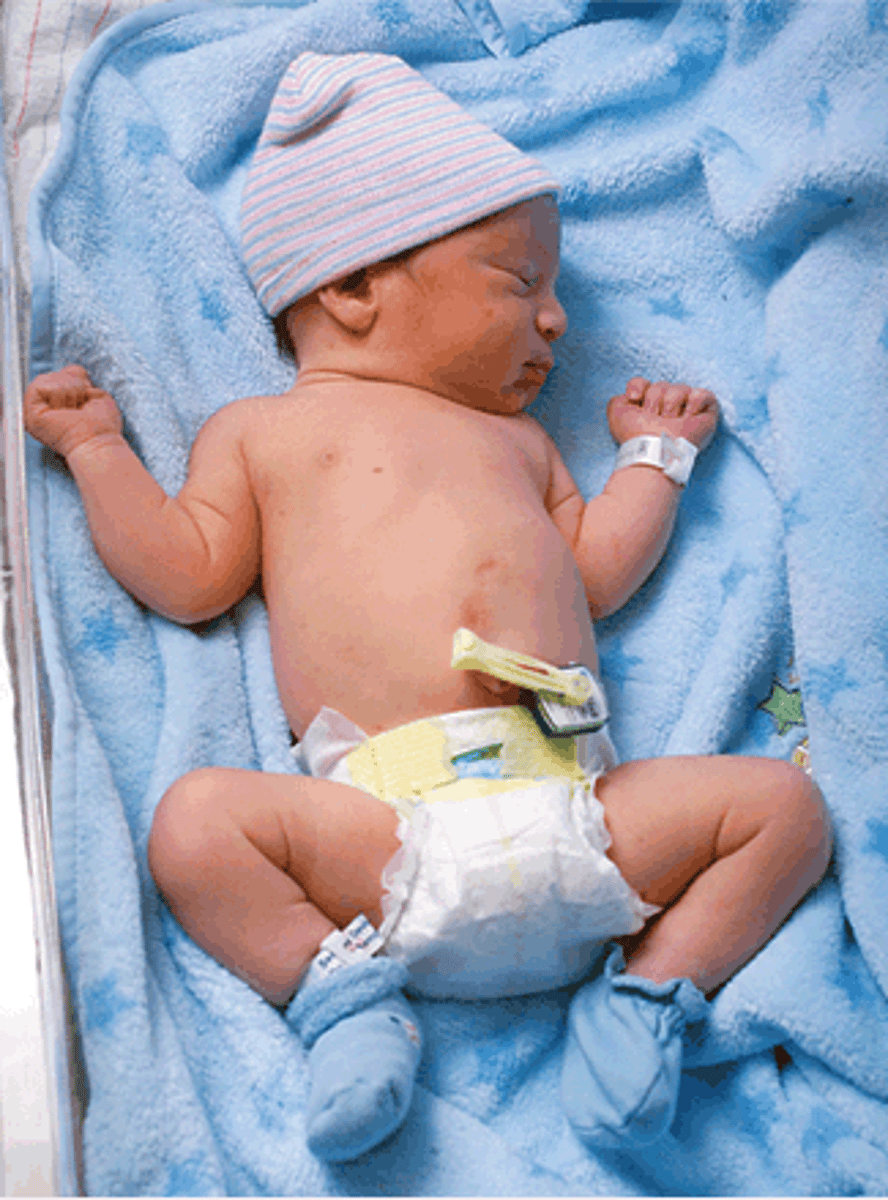
asymmetrical posture

Astasia (without stance)
when trying to stand the baby up, the legs give way and the infant sinks into flexion (baby has no control or stability)

4-5 month milestones
prone: props on forearms, one arm extended, weight-shifting to free arm and reach with one hand; props on hands with extended arms (assume hand support position), pivot prone
supine: alternates feet to mouth and bridiging, attempts to roll to side with leg or arm leading (can lead with knee or their upper trunk)
sitting: prop sit with assistance, static ring sitting emerging, pull to sit shows no head lag
standing: supported standing with some weight bearing
6-7 month milestones
prone:elevates trunk with elbow extension; may rock on hands and knees; belly crawling; rolls to supine
supine: brings feet to chin or mouth; rolls to prone; attempts to raise self to sit
sitting: unsustained sitting with high guard; static sitting while manipulating a toy; weight-shifting with lateral and anterior arm support
standing:supported standing with better weight bearing; take large fraction of weight; bounces actively in supported standing (full weight bearing with hip in greater extension and both legs together), head in line with body (hip behind shoulders), variable movement of legs, hips abd/ext. rotated
*Propped lying on side
Hands and knees
* Rock back and forth
*Lumbar lordosis
long sitting
Sitting with legs straight out in front
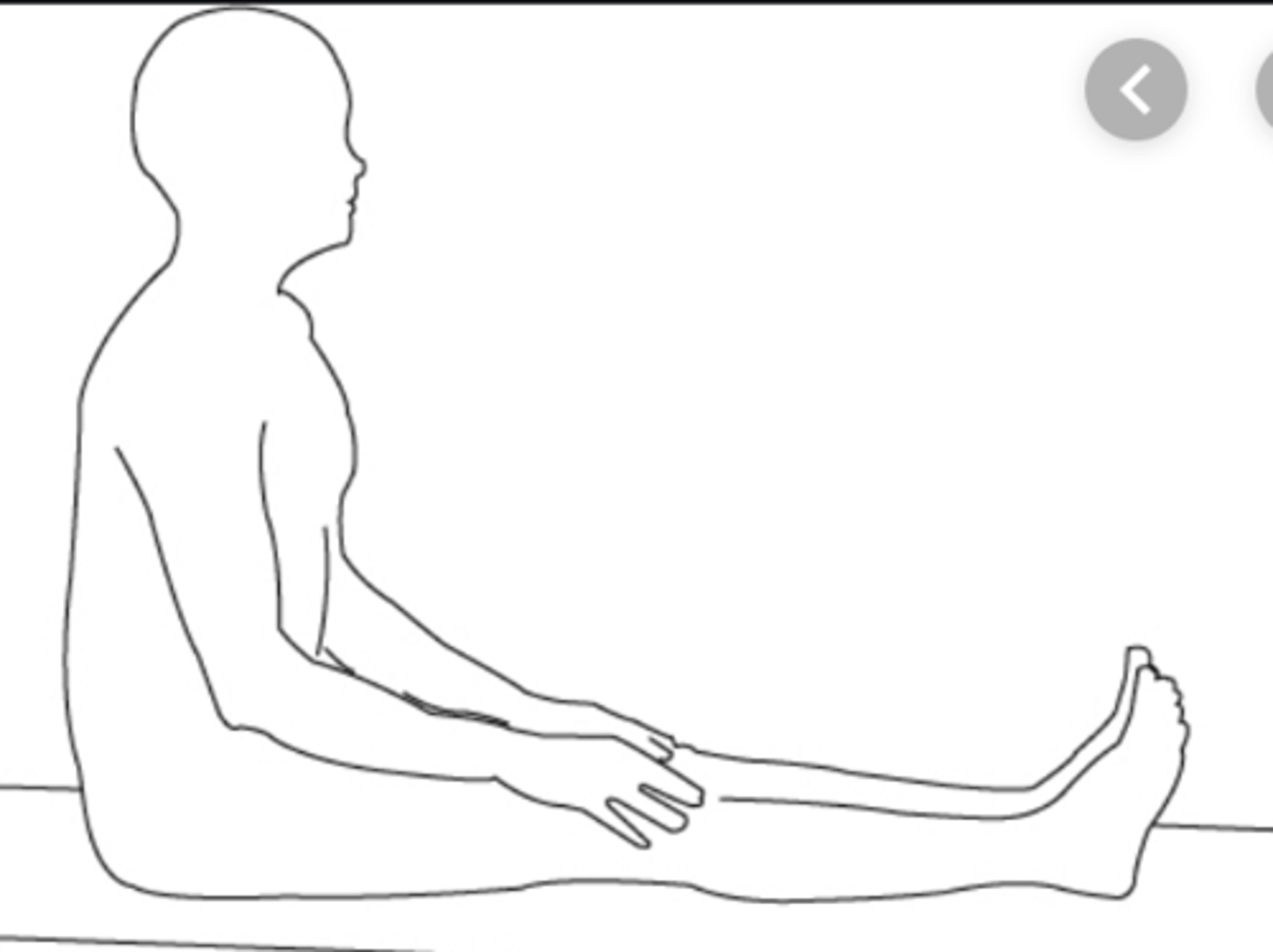
pivot prone
superman posture (raises head and arms or legs or both from surface)
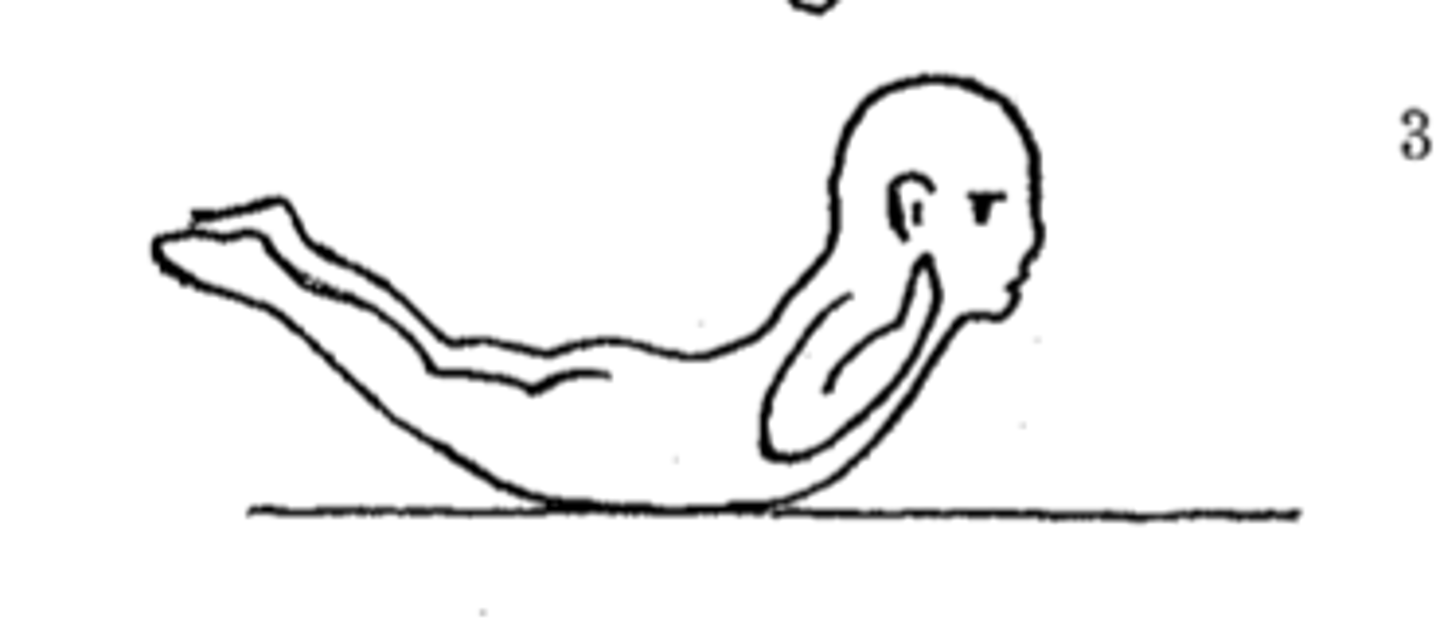
high guard position while sitting
hands flare out like a field goal while sitting

ring sitting
Sitting on the buttocks with legs forming a ring in front (not crossed)
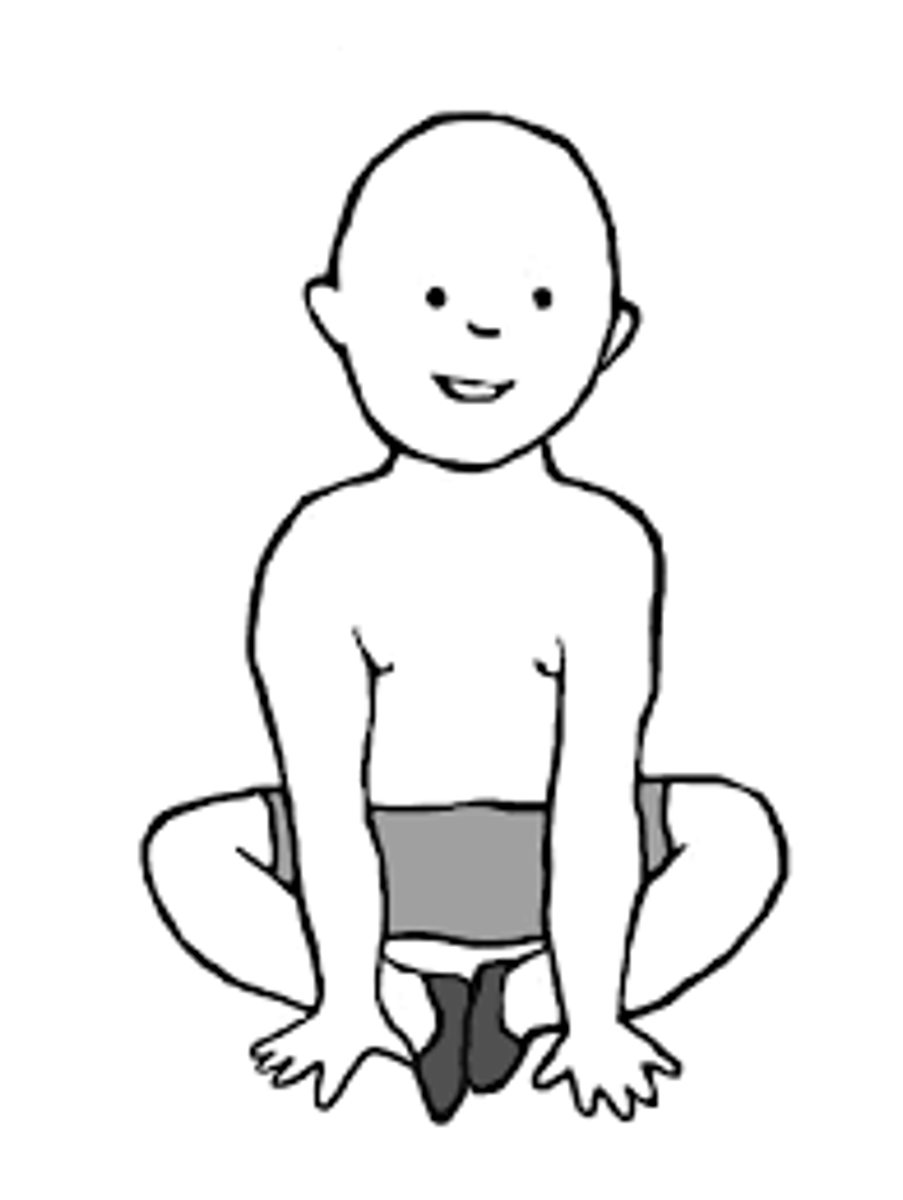
prop sitting with assistance
use their hands on the ground to support while sitting
short sitting
sitting upright with knees flexed and hanging over the edge of the surface
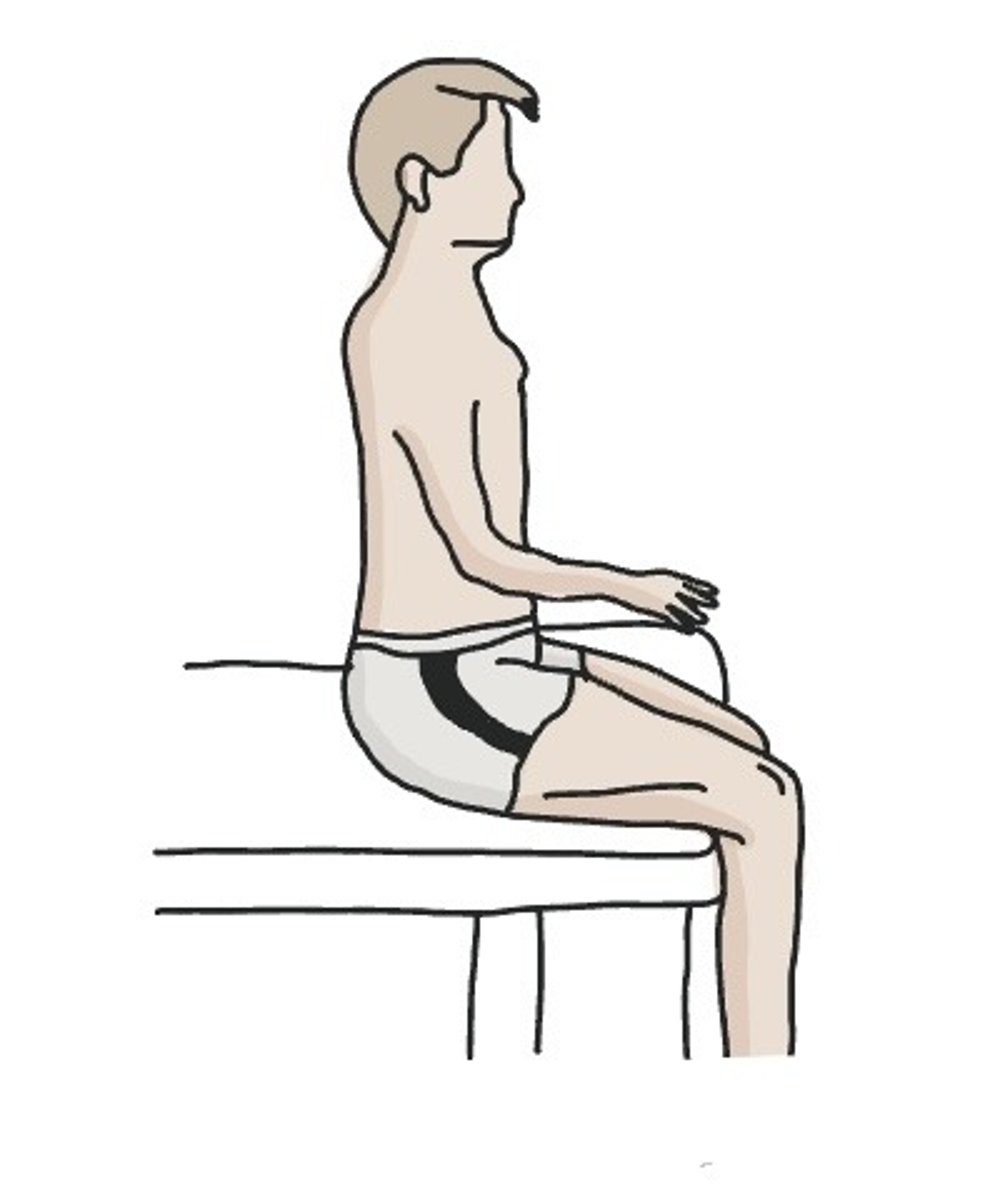
bridging

8-9 months milestones
prone: transitions in and out of sitting to quadruped (on all 4s) or prone, pulls to stand with support, CREEPING
supine: raise self to sit, not interested in supine
sitting: (w/o arm support) manipulate toy in sitting position, anterior and lateral protective reactions present, reach with rotation in sitting (if they want to grab something)
standing: bears full weight holding on to rail, stands at furniture (pull to stand with support)
*scoot/hitch/shuffle
crawling
reciprocal arm and leg movement with trunk rotation

creeping
belly not on ground

10-11 months milestones
prone: pull to stand by rolling up over feet, pulls to stand through half kneeling
supine: transitions to sitting and quadruped
sitting: rotates or pivots while sitting to reach, transitions to prone or supine easily
standing: lowering to sitting position from supported standing, stepping in standing when both or one hand is held, CRUISES with external support
12 month milestone
prone: stands up through quadruped
supine: moves rapidly into sitting or quadruped to standing
sitting: wide variety of sitting positions includes side-sitting
standing: INDEPENDENT WALKING with high guard arms and wide space, lower self with control from standing
*early stepping; high guard and laterally flex trunk to move foot forwards
*standing --> sqaut --> back to standing (controlled manner)
prone progression
-prone
-prone on elbows
-prone on extended arms
-pivot prone
-quadruped
-crawling (on belly)
-creeping (on hands and knees)
supine progression
-supine lying
-pull to sitting
-hands to knees and feet
-feet to mouth
sitting progression
-supported sitting
-propped sitting
-unsupported ring sitting
-independent sitting (half ring sitting, long sitting, side sitting, short sitting)
-hitching/scootching
standing progression
-supported standing
-pulling to stand
-independent standing
-cruising
-walking
13-18 months milestones
-independent walking (9-17 month)
- New walker's pattern: No heel strike,
Legs external rotated, Laterally flex trunk to move foot forwards, Small step length. High guard arms
- Climbs up stairs on hands, knees, and feet (8-14 months)
- Walking up stairs while holding on (15-16 months)
- Creeps backwards down stairs (15-23 months)
- Walking downstairs while holding on (17-18 months)
- Stoops to pick up objects and regains standing
18-24 months milestones
- Run stiffly with eyes on ground (18-20 months); seldom falls
- Creeps backwards downstairs (15-23 months)
- Climbs stairs using railing (both feet on each step)
24-36 months milestones
- Walks backward 10 feet (25-26 months)
- Walks three steps on a taped line (27-28 months)
- Runs 30 feet in 6 seconds (29-30 months)
- Walks up and down stairs without support (24-30 months)
- Walks up stairs, alternating feet (30-36 months)
- Jumps down from step (2 years)
- Stands on one foot for 1-2 seconds (31-32 months)
- Jumps on one foot, few steps (2.5 years)
- Begins to ride tricycle
- Kicks small ball
3-4 years milestones
-Jumps off floor with both feet (3 years)
-Jumps over objects, hops on one foot (3-5 years)
-Gallops, leading with one foot and transferring weight smoothly and evenly (3-4 years)
-Walks downstairs, alternating feet (36-42 months)
-Runs with arms moving back and forth, balls of feet used to push forward, high knee and heel lift and trunk leans forward (41-42 months)
-Stands on tiptoes (43-52 months)
preschool years
* ages 3-5
* Both gross and fine motor skills become increasingly fine-tuned during this age.
*Girls and boys differ in certain aspects of motor development.
*Boys, because of increased muscle strength, tend to be somewhat stronger.
*Girls tend to surpass boys in tasks of dexterity or those involving the coordination of limbs.
4-5 years milestone
- Stands on one foot for 10 seconds without swaying more than 20 degrees (53-60 months)
- Catches ball if prepared
- Jumps 2 to 3 inches
- Lean forward when jumping from a height
5-6 years milestones
-Can stop and change directions quickly when running
- Can hop 8 to 10 steps on one foot
- Throws ball and hits target at 10 ft
- Roller skates
- Rides bike
6 year milestone
* Can skip
- some kids can do skipping but some can't
school age
* Ages 6-12 years
* Mid and Late childhood to preteen
* Fundamental motor abilities are refined and become skilled
* Child learns to combine movements in novel ways
* Efficiency of movement
* Reducing variability
* Increasing adaptations to novel situations
* Increasing anticipation of outcome
8 years milestones
-Jumps rope skillfully
-Throws and bats a ball more skillfully
10 years milestones
Jumping distance continues to increase
11 years milestones
running speed stabilizes for girls
12 years milestone
plays ball more skillfully due to improved reaction time
Adolescence
* Time of increasing independence and separation from the family
* Movement toward adult abilities and skills
* Ages 13-21
* developmental stage between childhood and adulthood
* age at which it starts is imprecise partly because society is unclear about the roles of people in this stage (no longer children, not yet adults).
adolesence gross motor
* 13 years: males continue to increase running speed and jumping distance
* 14 years: standing long jump distance continues to increase for males, but stabilizes for females
* 15 years: may reach fastest reaction time
* 16 years: may reach peak performance level in sports